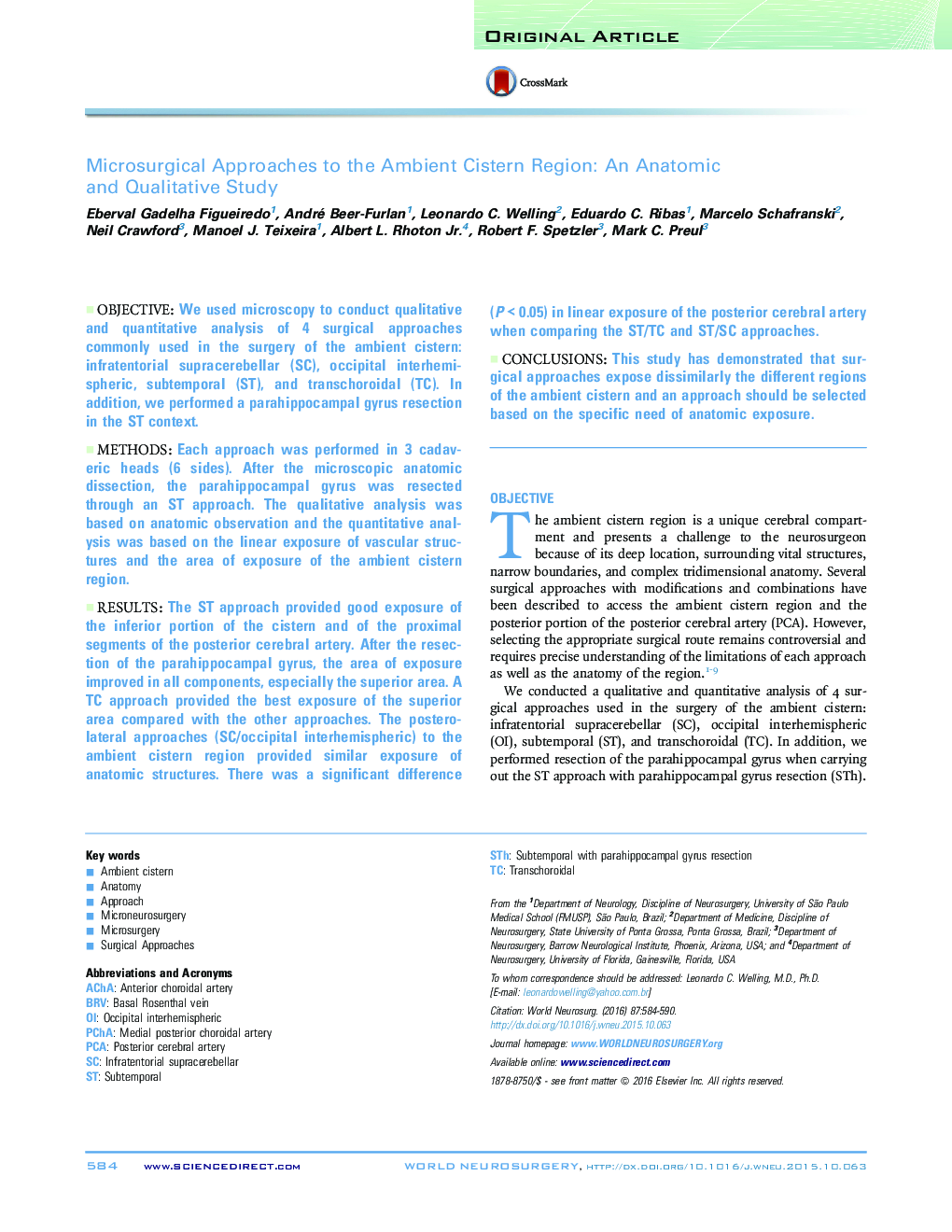| Article ID | Journal | Published Year | Pages | File Type |
|---|---|---|---|---|
| 6044061 | World Neurosurgery | 2016 | 7 Pages |
ObjectiveWe used microscopy to conduct qualitative and quantitative analysis of 4 surgical approaches commonly used in the surgery of the ambient cistern: infratentorial supracerebellar (SC), occipital interhemispheric, subtemporal (ST), and transchoroidal (TC). In addition, we performed a parahippocampal gyrus resection in the ST context.MethodsEach approach was performed in 3 cadaveric heads (6 sides). After the microscopic anatomic dissection, the parahippocampal gyrus was resected through an ST approach. The qualitative analysis was based on anatomic observation and the quantitative analysis was based on the linear exposure of vascular structures and the area of exposure of the ambient cistern region.ResultsThe ST approach provided good exposure of the inferior portion of the cistern and of the proximal segments of the posterior cerebral artery. After the resection of the parahippocampal gyrus, the area of exposure improved in all components, especially the superior area. A TC approach provided the best exposure of the superior area compared with the other approaches. The posterolateral approaches (SC/occipital interhemispheric) to the ambient cistern region provided similar exposure of anatomic structures. There was a significant difference (PÂ < 0.05) in linear exposure of the posterior cerebral artery when comparing the ST/TC and ST/SC approaches.ConclusionsThis study has demonstrated that surgical approaches expose dissimilarly the different regions of the ambient cistern and an approach should be selected based on the specific need of anatomic exposure.
